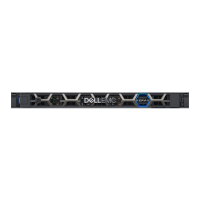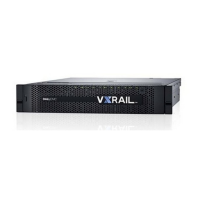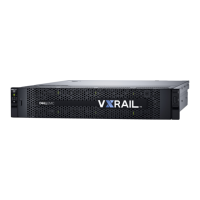Limit Spanning Tree Protocol on VxRail Switch Ports
Network traffic must be allowed uninterrupted passage between the physical switch ports and the VxRail nodes. Certain Spanning
Tree states can place restrictions on network traffic, and can force the port into an unexpected timeout mode. These conditions
caused by Spanning Tree can disrupt VxRail normal operations and impact performance.
If Spanning Tree is enabled in your network, ensure that the physical switch ports connected to VxRail nodes are configured with a
setting such as ‘Portfast’, or set as an edge port. These settings set the port to forwarding state, so no disruption occurs. Because
vSphere virtual switches do not support STP, physical switch ports connected to an ESXi host must have a setting such as ‘Portfast’
configured if spanning tree is enabled to avoid loops within the physical switch network.
Step 3. Configure Ports and VLANs on Your Switch(es)
Now that you understand the switch requirements, it is time to configure your switch(es). The VxRail network can be configured
with or without VLANs. For performance and scalability, it is highly recommended to configure VxRail with VLANs. As listed in the
VxRail Setup Checklist, you will be configuring the following VLANs:
For VxRail clusters at version 4.7 or higher:
o VxRail External Management VLAN (recommended is untagged/native)
o VxRail Internal Management VLAN: make sure that IPv6 multicast is configured/enabled on this VLAN.
For VxRail clusters prior to version 4.7:
o VxRail Management VLAN (recommended is untagged/native): make sure that IPv6 multicast is
configured/enabled on this VLAN.
For VxRail clusters at version 4.5 or higher:
o vSAN VLAN: Make sure that IPv4 unicast mode is configured/enabled
For VxRail clusters prior to version 4.5:
o vSAN VLAN: Make sure that IPv4 multicast is configured/enabled. Enabling IGMP snooping and querier is highly
recommended.
•
vSphere vMotion VLAN

